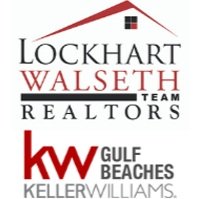How to Choose a Hurricane-Resilient Home in St. Petersburg, Florida
Buying a home in St. Petersburg, FL or surrounding coastal communities like Pass-a-Grille, Tierra Verde, or St. Pete Beach? Then hurricane protection should absolutely be part of your home search.
With hurricane season running from June through November each year, knowing how to spot a storm-resilient home can protect your finances, lower your insurance, and give you peace of mind long after closing day.
Here’s what to look for when buying a hurricane-resilient home in the St. Pete area:
🧱 1. Check the Year the Home Was Built
Florida building codes were significantly updated in 2002 and again in 2010 to require stronger storm protection. Homes built after these years are generally:
More wind-resistant
More likely to have impact-rated windows and doors
Eligible for wind mitigation insurance discounts
💡 If you’re looking at an older home, ask if it’s been updated to current hurricane codes.
🪟 2. Look for Impact Windows or Hurricane Shutters
Homes near the beach—like in Pass-a-Grille, St. Pete Beach, or Shore Acres—should have either:
Impact-resistant glass (built to withstand debris and wind pressure), or
Hurricane shutters (accordion, panel, or roll-down)
This is a major factor for both safety and homeowners insurance savings.
🏠 3. Ask About the Roof
The roof is your first line of defense in a hurricane. Look for:
Hip-style roofs (sloped on all sides – better in wind)
Roofs installed after 2015 or updated to meet wind codes
Roof-to-wall connections (like clips or straps) that are documented in a wind mitigation report
📄 Tip: Ask the seller for a copy of the wind mitigation inspection—it can reduce your annual insurance by hundreds or even thousands.
🌊 4. Know the Flood Zone
Much of the St. Pete area lies in flood-prone zones—especially Old Northeast, Shore Acres, Snell Isle, and coastal Pass-a-Grille. A hurricane-resilient home should ideally:
Be in Flood Zone X or elevated above Base Flood Elevation
Have flood vents or breakaway walls if it’s a raised structure
Include an elevation certificate if in a flood zone (helps with flood insurance rates)
📍 Check your flood zone on the Pinellas County Flood Map
💡 5. Whole-House Generators or Storm-Proof Upgrades
Extra protection features that increase a home's hurricane resilience:
Whole-house generator
Elevated HVAC and electrical systems (important in flood zones)
Steel garage doors with wind resistance
Landscape design that reduces debris risk (no top-heavy trees near roof)
📋 6. Review Insurance and Storm History
When you find a property you love, go deeper:
Ask the seller for prior insurance claims or flood events
Have your insurance agent quote homeowners + flood insurance early in the contract period
Review past hurricane impact in the area (your agent can help with this)
🧭 Bottom Line: The Right Home Can Weather the Storm
In coastal Florida, it's not if—but when—a hurricane may pass through. Choosing a storm-resilient home in St. Petersburg or nearby beaches protects your investment and your peace of mind.
As a local expert who's helped dozens of buyers navigate coastal homes, flood zones, and insurance challenges, I can help you find a home that’s not just beautiful—but built to last.
🔍 Let’s Find Your Storm-Smart Home
Looking to buy in St. Pete, Pass-a-Grille, St. Pete Beach, or the Pinellas coastline? I’ll help you find a home that checks all the boxes—including hurricane protection and long-term value.
